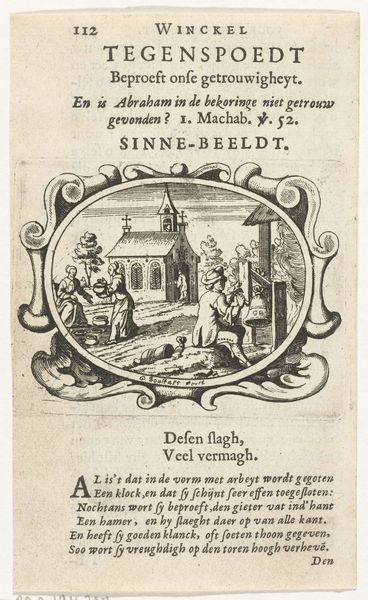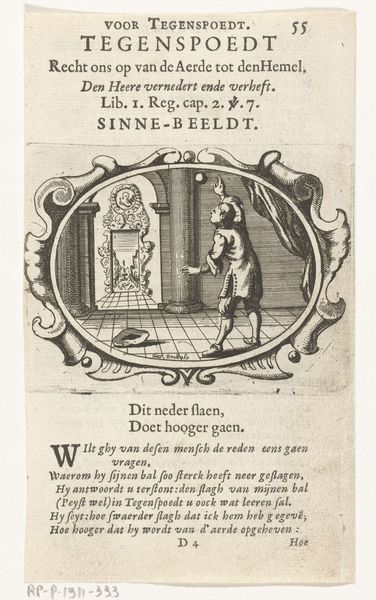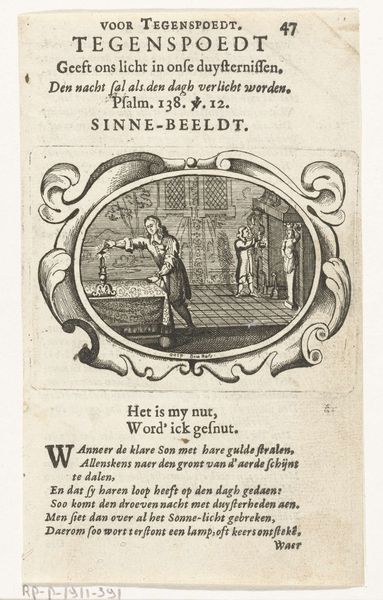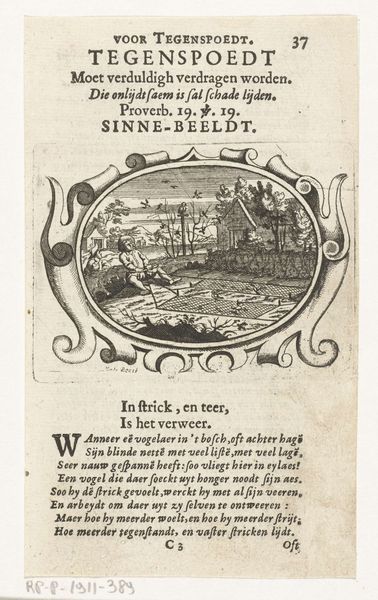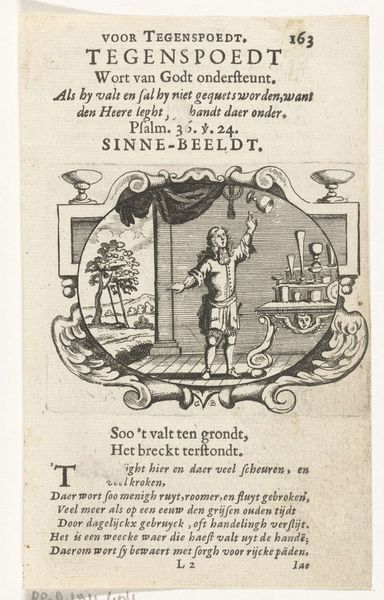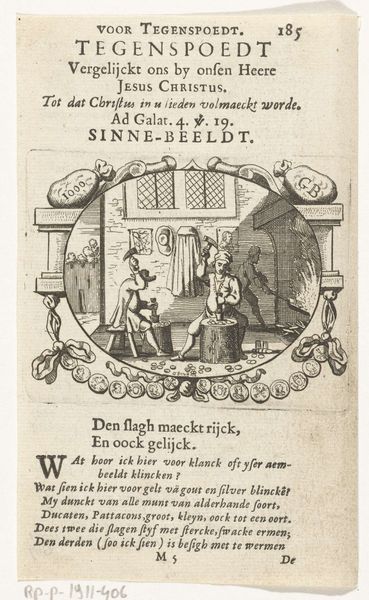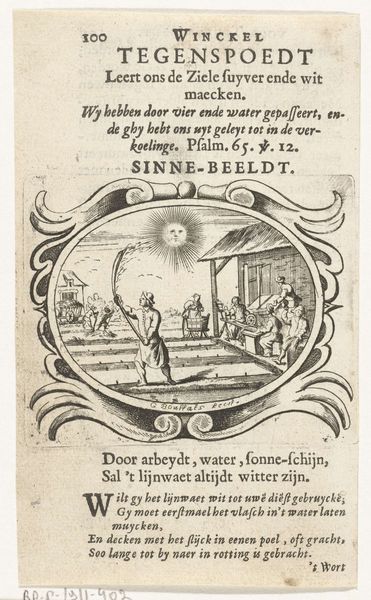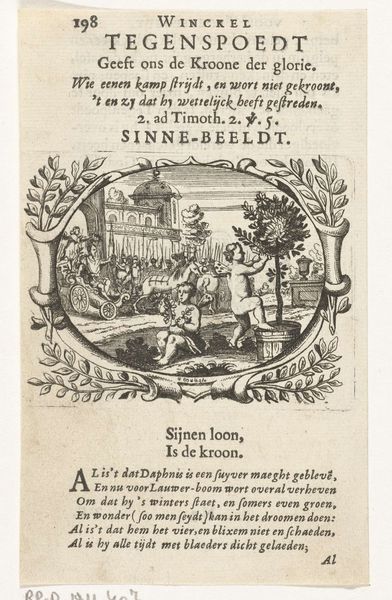
print, engraving
#
narrative-art
#
baroque
# print
#
genre-painting
#
engraving
Dimensions: height 144 mm, width 88 mm, height 65 mm, width 85 mm
Copyright: Rijks Museum: Open Domain
This print, made by Gaspar Bouttats around 1648, is a small but compelling example of early printmaking. The medium here is crucial. The image was created through engraving, a process demanding immense skill and labor. A metal plate, likely copper, was painstakingly incised with lines to hold ink. The quality of the line determines the detail and texture seen in the final print. Notice how the parallel lines create shading and volume. Prints like this played a vital role in disseminating information and ideas. It's no accident that this print, with its moralizing inscription about sickness and spiritual health, appeared during a time of religious and social upheaval. The print's small size and relative affordability meant that its message could reach a wide audience, contributing to public discourse. Ultimately, understanding the materiality and means of production allows us to see this print not just as an image, but as a potent object with a rich history.
Comments
No comments
Be the first to comment and join the conversation on the ultimate creative platform.
